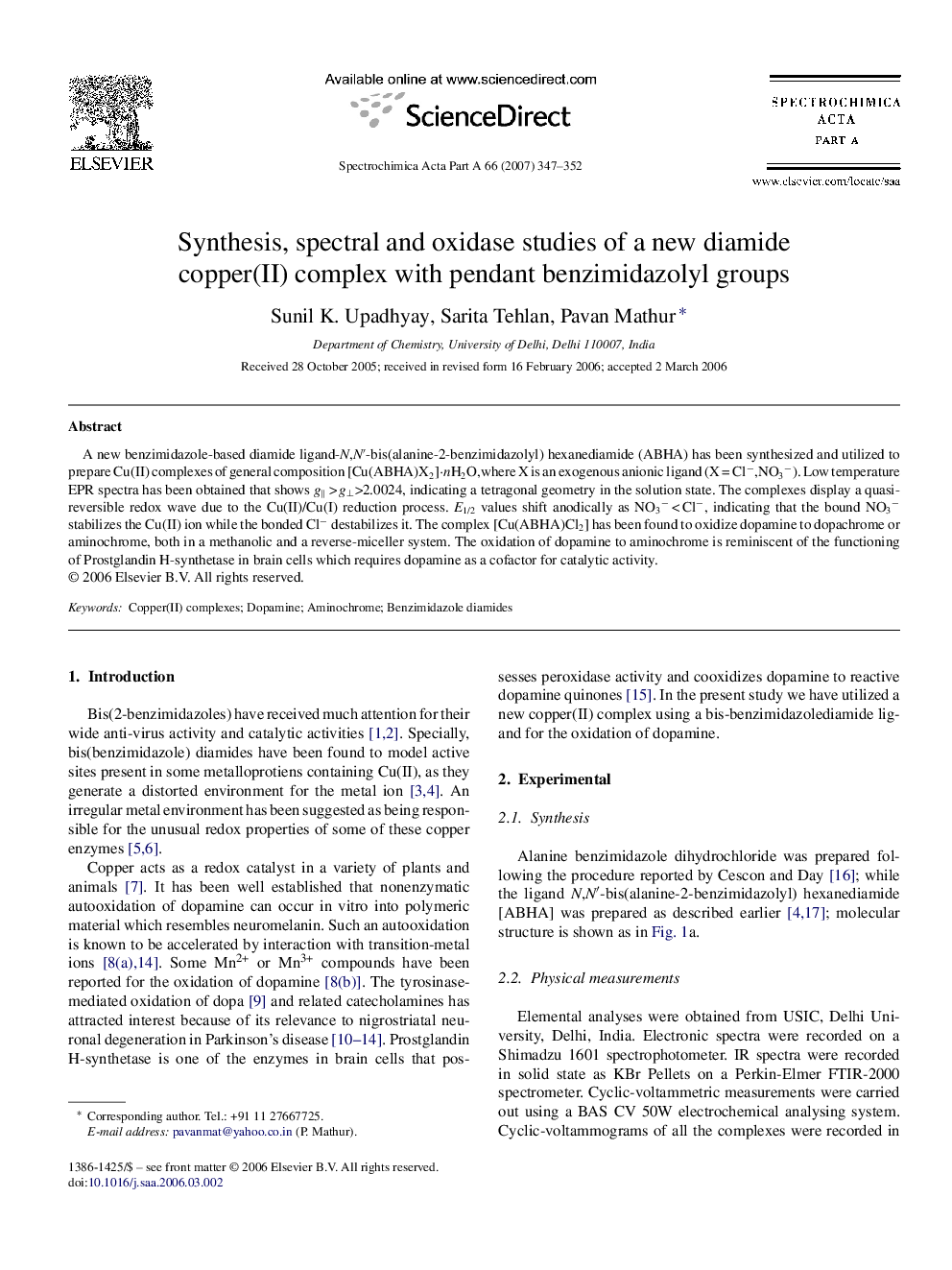| Article ID | Journal | Published Year | Pages | File Type |
|---|---|---|---|---|
| 1236024 | Spectrochimica Acta Part A: Molecular and Biomolecular Spectroscopy | 2007 | 6 Pages |
A new benzimidazole-based diamide ligand-N,N′-bis(alanine-2-benzimidazolyl) hexanediamide (ABHA) has been synthesized and utilized to prepare Cu(II) complexes of general composition [Cu(ABHA)X2]·nH2O,where X is an exogenous anionic ligand (X = Cl−,NO3−). Low temperature EPR spectra has been obtained that shows g∥ > g⊥>2.0024, indicating a tetragonal geometry in the solution state. The complexes display a quasi-reversible redox wave due to the Cu(II)/Cu(I) reduction process. E1/2 values shift anodically as NO3− < Cl−, indicating that the bound NO3− stabilizes the Cu(II) ion while the bonded Cl− destabilizes it. The complex [Cu(ABHA)Cl2] has been found to oxidize dopamine to dopachrome or aminochrome, both in a methanolic and a reverse-miceller system. The oxidation of dopamine to aminochrome is reminiscent of the functioning of Prostglandin H-synthetase in brain cells which requires dopamine as a cofactor for catalytic activity.
